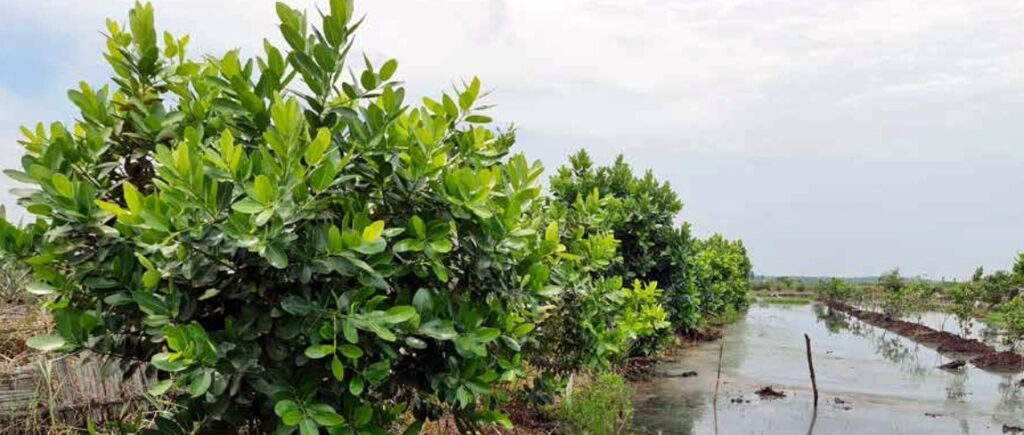Water restoration and agroforestry are two important strategies that can work together synergistically to significantly mitigate the impacts from climate change. They address different aspects of the issue, but both have the potential to sequester carbon, enhance ecosystems, and improve overall environmental resilience. Let’s look at each of these approaches in more detail:
Water Restoration:
Water restoration involves implementing practices and projects that restore and conserve water bodies such as wetlands, rivers, lakes, and aquifers. This approach can help mitigate climate change in several ways:
Carbon Sequestration: Wetlands and aquatic ecosystems are highly effective at capturing and storing carbon dioxide (CO2) from the atmosphere. When these areas are degraded or drained, the stored carbon is released into the atmosphere. Restoring and conserving wetlands can prevent this carbon release and even lead to additional carbon sequestration.
Temperature Regulation: Aquatic ecosystems play a crucial role in regulating local temperatures. Bodies of water can absorb excess heat, helping to mitigate the urban heat island effect. This can lead to reduced energy consumption for cooling and decreased greenhouse gas emissions.
Biodiversity Conservation: Healthy water bodies support diverse ecosystems, including various plant and animal species. Biodiverse ecosystems are more resilient to climate change and can help buffer against its impacts.
Agroforestry:
Agroforestry is an agricultural approach that combines the cultivation of trees or shrubs with crops or livestock on the same piece of land. This practice offers numerous benefits for both agricultural productivity and climate change mitigation:
Carbon Sequestration: Trees are excellent carbon sinks, absorbing CO2 from the atmosphere through photosynthesis and storing it in their biomass and soil. Agroforestry systems increase the amount of carbon stored compared to conventional agricultural practices.
Soil Health: Trees and other perennial plants in agroforestry systems help improve soil structure, fertility, and water retention. This contributes to more productive and resilient agricultural landscapes.
Erosion Control: Tree roots help stabilize soil, reducing erosion and the loss of valuable topsoil. This is particularly important as climate change can exacerbate extreme weather events like heavy rainfall and flooding.
Diversification: Agroforestry systems provide greater biodiversity compared to monoculture farming. This diversification enhances ecosystem stability and reduces the vulnerability of agricultural production to climate-related risks.
Shade and Microclimate: Trees in agroforestry systems provide shade to crops and livestock, creating more favorable microclimates. This can help reduce heat stress on plants and animals, leading to increased yields and better animal health.
Conclusion:
Both water restoration and agroforestry are valuable strategies for mitigating climate change and enhancing ecosystem resilience. Implementing these approaches requires coordinated efforts among governments, communities, organizations, and individuals. By investing in these practices, we can sequester carbon, improve water resources, enhance biodiversity, and create more sustainable and resilient landscapes in the face of a changing climate.
See real world examples of how water restoration and agroforestry can heal the ea

Jeff is founder of Terra Vida Academy and has been actively involved in protecting nature for over 35 years.




